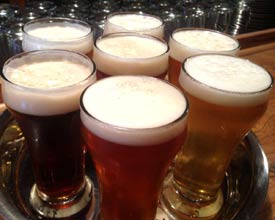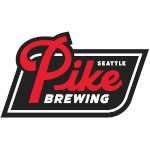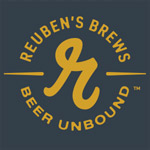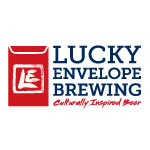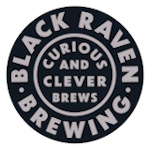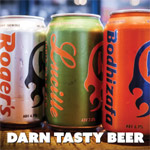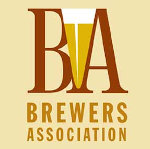The Brewers Association just announced the release of the revised Beer Style Guidelines for 2016. We outline some of the changes and additions below. It’s kind of a “chicken or the egg” thing. Do beers change because the guidelines change or do the guidelines change because the beers change? The sound of one hand clapping, a tree falls in the woods, and so on.
The Brewers Association Beer Style Guidelines are used by the world’s most-serious and highly trained beer judges when awarding coveted medals at the Great American Beer Festival and other prestigious beer competitions. In theory at least, they also help guide brewers when they devise new recipes.
Some Notes on the Changes
Those Gawdawful Gourds: Just when right-minded beer drinkers imagined that the world’s irrational exuberance for pumpkin beer was at last subsiding, the Brewers Association added a second category of pumpkin beer and reworked the existing definition, thus creating two different styles: Pumpkin/Squash Beer and Pumpkin Spice Beer.
Both styles hold one thing in common according to the new guidelines: “Hop flavor is none to medium, and not overpowering pumpkin or squash characters.” Why would you do that to a poor, defenseless beer? I hold Dick Cantwell personally responsible for the proliferation of this abomination. (I’m kidding. Kind of.)
Why Don’t You Love Me Anymore?: I stare blankly at a pint of IPA that I once loved, realizing that we’ve grown apart, have nothing in common anymore, and that we can never rekindle the fire. Whatever it says to me, its tearful pleadings and platitudes, all I can muster in response is, “It’s not you. It’s me.”
The IPA you loved in 2010 has fallen out of favor and now seems bland and boring. The beer has not changed. You have changed. Many breweries are waking up to the fact that hop lovers have become harder and harder to arouse. A lot of breweries that cut their teeth on IPA are now finding that they need to rework the recipe or introduce a new flagship IPA in order to stay relevant in the minds of IPA drinkers. Our collective palate has evolved. The new hops produced by hop farmers have also evolved and provide all sorts of crazy flavors and aromas.
Recognizing all of this, the BA decided to rework the definition of American-Style India Pale Ale. According to the guidelines, hop aroma should exhibit “various floral, fruity, sulfur/onion-garlic-catty, citrus-like, piney, resinous characters.”
Taken out of context, it sounds like what George Carlin used to describe as his “Heineken fart.”
What Gose Up, Must Gose Down: We’ve become a bit numb to it, but gose is a damn strange style of beer. I like gose a lot, but when I try describing it my less-beery friends, they look like they’re going to puke.
Since American brewers so magnificently take artistic license with just about every European tradition, the BA decided that it needed to introduce a new style of gose, Contemporary Gose, as an alternative to traditional gose (Leipzig-Style Gose). “A wide variety of herbal, spice, floral or fruity aromas other than found in traditional Leipzig-Style Gose are present, in harmony with other aromas. Horsey, leathery or earthy aromas…” YUM!
Threatening My Manhood: The Brewers Association added three new European styles of beer to the guidelines that you’ve probably never even tasted. The names themselves are challenging enough, requiring me to use the WordPress special characters button when spelling them out.
I am not exactly a novice beer drinker, but suddenly find myself wallowing in my own inadequacy because I’ve never had a Breslau-Style Dark Schöps. To further invalidate my manhood, the BA also added Breslau-Style Pale Schöps, Swedish-Style Gotlandsdricke, and Finnish-Style Sahti.
For you neophytes, Finnish-Style Sahti is a traditional beer from Finland that is brewed with juniper and bakers’ or bread yeast. Everyone knows that, right?
The Meat of the Matter
Over 100 total changes were made to this year’s version of the Beer Style Guidelines. Of note, eight new styles were added, creating 152 total. This represents a net increase of seven over the 145 shown in 2015.
Here are the new styles added to the Beer Style Guidelines for 2016:
- Breslau-Style Pale Schöps and Breslau-Style Dark Schöps – Schops are historic ale styles (the early Prussian city of Breslau is now called Wroclaw and is located within Poland), brewed perhaps as early as the 1300s, and by the 1600s documented as predominantly wheat based
- Contemporary Gose – recognizing the huge diversity in modern brewer interpretations arising from and diverging from traditional Leipzig-Style Gose
- Specialty Saison – recognizing the huge diversity in modern brewer interpretations arising from and diverging from Classic French & Belgian-Style Saison
- Finnish-Style Sahti – traditional Finnish style with juniper and bakers’ or bread yeast
- Swedish-Style Gotlandsdricke – traditional Swedish style with juniper, birchwood smoke notes and baker’s or bread yeast
- European-Style Dark Lager – separating these beers from their Munich Dunkel Lager cousins
- Pumpkin/Squash Beer – a new style to emphasize perception of pumpkin and/or squash aromas and flavors, without spicing
Significant reworks of existing styles, based on brewer and judge comments, or based on the creation of new styles, include the following:
- American-Style India Pale Ale
- American-Style Black Ale
- Kellerbier or Zwickelbier Ale
- Leipzig-Style Gose
- Classic French & Belgian-Style Saison
- Pumpkin Spice Beer – reworked the old Pumpkin Beer category, which entries exhibit predominantly spice aromas and flavors, but no necessarily pumpkin or squash
- Specialty Beer – clarified that the hallmarks of this style have to do with unusual fermentables, and further clarifies that nuts provide flavor and aroma far more than fermentables, such that nut-containing beers are best characterized as Field Beer
- Brett Beer – numerous updates and clarifications, especially with respect to beers fermented with (relatively) flavor neutral Brettanomyces which taste like non-Brett beers
“The Brewers Association Beer Style Guidelines continue to serve as the authoritative resource on world beer styles for brewers and beer lovers alike,” said Chris Swersey, competition manager, Brewers Association. “This year’s update includes the addition of several exciting historic beer styles along with many revisions that keep the Guidelines relevant and current.”
Since 1979 the Brewers Association has provided beer style descriptions as a reference for brewers and beer competition organizers. Much of the early work was based on the assistance and contributions of beer journalist Michael Jackson. The task of creating a realistic set of guidelines is always complex. The beer style guidelines use sources from the commercial brewing industry, beer analyses, and consultations with beer industry experts and knowledgeable beer enthusiasts as resources for information.
The 2016 beer style guidelines are available for download at BrewersAssociation.org.

